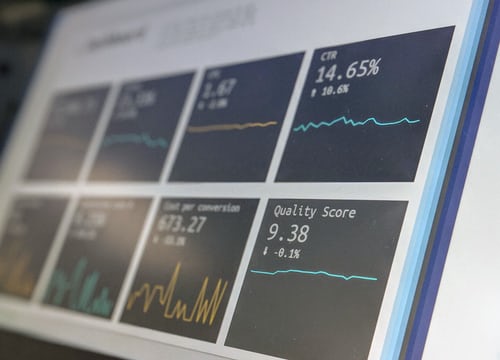Conversion Optimization Marketing
Marketing It is a bit of a mystery to the layperson who has never studied the intricacies of it, but most will find the subject fascinating if explained in a way that is easily understood. That’s what we plan to do with this article; we hope to convey to our customer the passionate zeal for marketing with which we serve. The way to do that is to explain what marketing is, and how we’ve improved upon that definition by adding our own unique blend of ideas to the mix. As you’ll learn later in this article, marketing must have an edgy innovation to it, a young viewpoint that incorporates the technology of our time. This is what our company embraces down to its core.
What is Marketing?
Marketing is defined by the American Marketing Association as “the activity, set of institutions, and processes for creating, communicating, delivering, and exchanging offerings that have value for customers, clients, partners, and society at large.” The Charted Institute of Marketing defines marketing as “the management process responsible for identifying, anticipating and satisfying customer requirements profitably.” As seen from a systems viewpoint, sales process marketing considers it to be “a set of processes that are interconnected and interdependent with other functions, whose methods can be improved using a variety of relatively new approaches.” Finally, Value-based marketing views it as a role that contributes toward increasing the value of the shareholder; this view seeks to make the most out of the relationships with shareholders. The idea of this is to cultivate and nourish the relationship to maximize returns, thereby creating a competitive edge.
Basically, marketing is the method by which:
- customer is created
- customer is kept
- customer is satisfied
In the past, it was viewed as a creative industry that merely included advertising, distribution, and selling. But today, in our age of studiousness, courses in economics, mathematics, sociology, psychology, social sciences, and even anthropology and neuroscience have been folded into the marketing field. In fact, the profession is literally recognized as actual science, leading to students to earn an actual Master-of-Science degree in social media and online marketing!
What is the Process of Marketing?
The process of marketing begins with research and goes through several processes before its finalization. We will explore these in detail below. The Marketing concept is simply referred to as the foundation of marketing in the modern age. This concept embraces the idea that to fulfill organizational goals, an organization should intuitively foresee the needs and desires of the target consumer and satisfy those needs and desires more effectively than its competitors. This concept is tied to marketing itself; it is the literal foundation of effective marketing. Marketing Orientation Simply put, marketing orientation is the perception or opinion that a firm feels about its product in relation to the consumer. There are several things into consideration: being primarily concerned with the quality of the product while focusing on maximizing production as much as possible the marketing orientation has within it three subcategories:
- Customer Orientation: producing products and goods people are willing and able to buy
- Organization Orientation: team-oriented approach, beginning with intuitive research all the way to finalization and promotion of product.
- Mutually Beneficial Exchange: in essence, this is the partnership between a marketing firm’s increasing profits, which helps feeds and satisfy the needs, wants, and value-for-money the consumer requires.
In the 1960s, E. Jerome McCarthy, Professor at Michigan State University, came up with a very clever “Marketing Mix” which contains four elements: product, price, place and promotion.
- Product: specifics of the services or product
- Price: includes not only the price of the product but whatever may be exchanged, e.g. time, energy, effort, etc.
- Place: this references ‘how’ the product finds its way to the customer.
- Promotion: sales promotion, advertising, publicity, personal selling, and promotional education.
“Marketing environment” refers to all factors (whether direct or indirect, internal or external) that influence a firm’s marketing decisions. This includes two areas:
- The macro-environment: when a firm holds very little to no control, such as inflation, unemployment, health, etc.
- The micro-environment: when a firm holds a very large amount of (although, at times, not total) control, such as media, employees, consumers, suppliers, etc. One of the most vital aspects of marketing is the research process which includes a gamut of areas anywhere from geographically, psychologically, and demographically.
What Services Marketing Firm Can Provide?
As you can see, it’s very interesting how it all works together. In addition to the above definitions and standards, one thing that makes our firm unique is in our use of technology to measure the broad effectiveness of our marketing ability. Our #1 priority is to help our customers succeed and be the absolute best they can possibly be. Because of our unique approach, we are able to effectively control:
- Social Media Marketing
- Internet Marketing Services
- Product Marketing
- Marketing research
- Market segmentation
- Behavioral targeting
- Geographical targeting
- Marketing communications mix
- Marketing planning
- Affiliate Marketing
- Email Marketing Campaigns
- Pay Per Click Marketing
- Marketing Planning Process
- Data Base Marketing
The techniques we use help us to better understand if a company’s marketing is effective, turn insights into actions and deliver a pertinent experience to the consumer. Our approach to data base marketing is data-driven and able to measure online stats, clicks, etc. (called marketing event data) in a very detailed manner. This means we can view, in real-time, our marketing performance and see how it matches up with the view of business has of their progress. We can keep track, each step, of our client’s customer journey. We hope this has helped our customers understand what it is that we do, and how we do it. We appreciate you all, and please don’t hesitate to contact us if you have any questions!
Conversion Optimization
Conversion optimization is a way of increasing website leads and sales by reducing the site’s visitor bounce rate. Karma Snack is a leader in the field of conversion optimization. They monitor website pages, pay-per-click campaigns, banner ads, and all components of a client’s online marketing approach to assure that web visitors request a catalog, fill out a form, send an email, make a phone call or make a purchase.
Karma Snack optimizes every aspect of every web page for their clients with a focus on reaching their conversion goals. They test header tags, title tags, keywords, key phrases, landing pages, target demographics, price points, images, photos, audio and visual media, and media campaigns, color schemes, and the power and effectiveness of the brand message. They produce a seamless whole that is attractive, appropriate and trustworthy for the customer or potential customer.
Known for its innovative and cutting-edge approach, Karma Snack utilizes several tests that increase conversions on a continual basis. They employ A/B Split Testing, Multivariate Testing, and Dynamic SEO, as well as other proprietary technologies that create a compelling, effective website that customers and potential customers like to visit. All of this adds up to a profitable return on investment – ROI – for their clients.
Conversion optimization is central to an effective Internet Marketing Strategy. When developed correctly, it works to continually convert visitors to customers.
Extensive analysis of clients’ websites, goals, company metrics, their products or services, the relevant demographics, and keywords the visitor is using are all components of effective conversion optimization. Then the conversion optimization techniques are employed on an ongoing, active basis, thus keeping at the leading edge of the client’s industry and ahead of the competition.
Some conversion optimization components include:
Determining optimization goals – Client’s goals are specifically defined, with the results of the optimization used to move toward those goals.
Data collecting and processing – hundreds of variables are rapidly and automatically sorted through, revealing the most effective components.
Learning curve – Once the testing has provided a set or sets of information that can be applied to the client’s business, it is of vital importance to assure that the results can be duplicated. Statistical methods come into play with techniques such as simulations, validation testing, control groups, variable selection and other techniques that help clarify the actual results as distinguished from chance circumstances.
Contact Karma Snack For Help:
Miami Digital Marketing Agency Karma Snack’s team has been developing their conversion optimization science since 1995. Their intelligent and friendly team is waiting to discuss with you how they can improve your business conversions. Contact them today.
Request a proposal or Contact Us to learn more.





